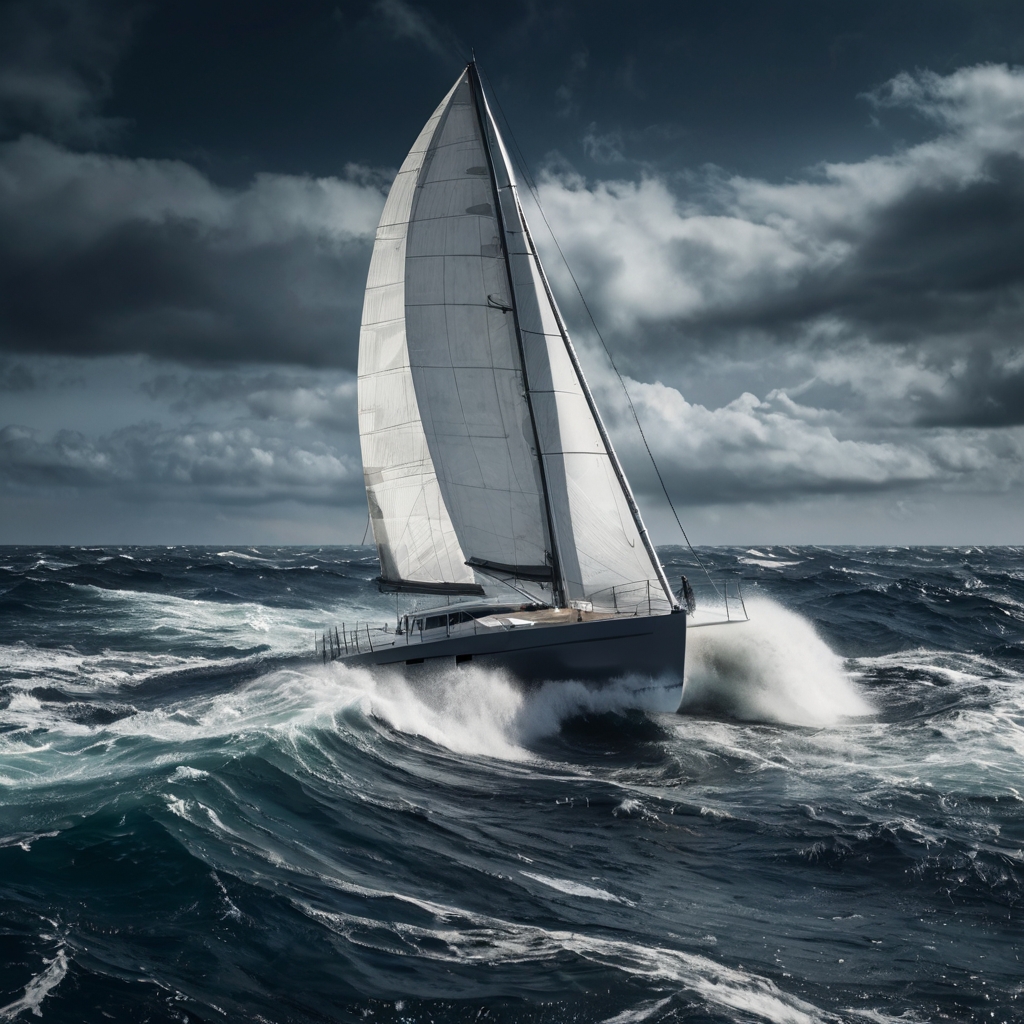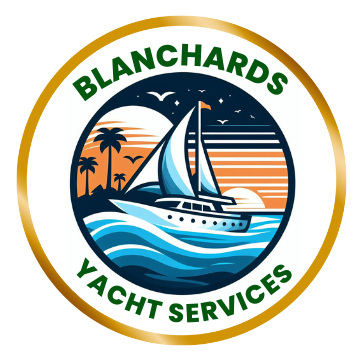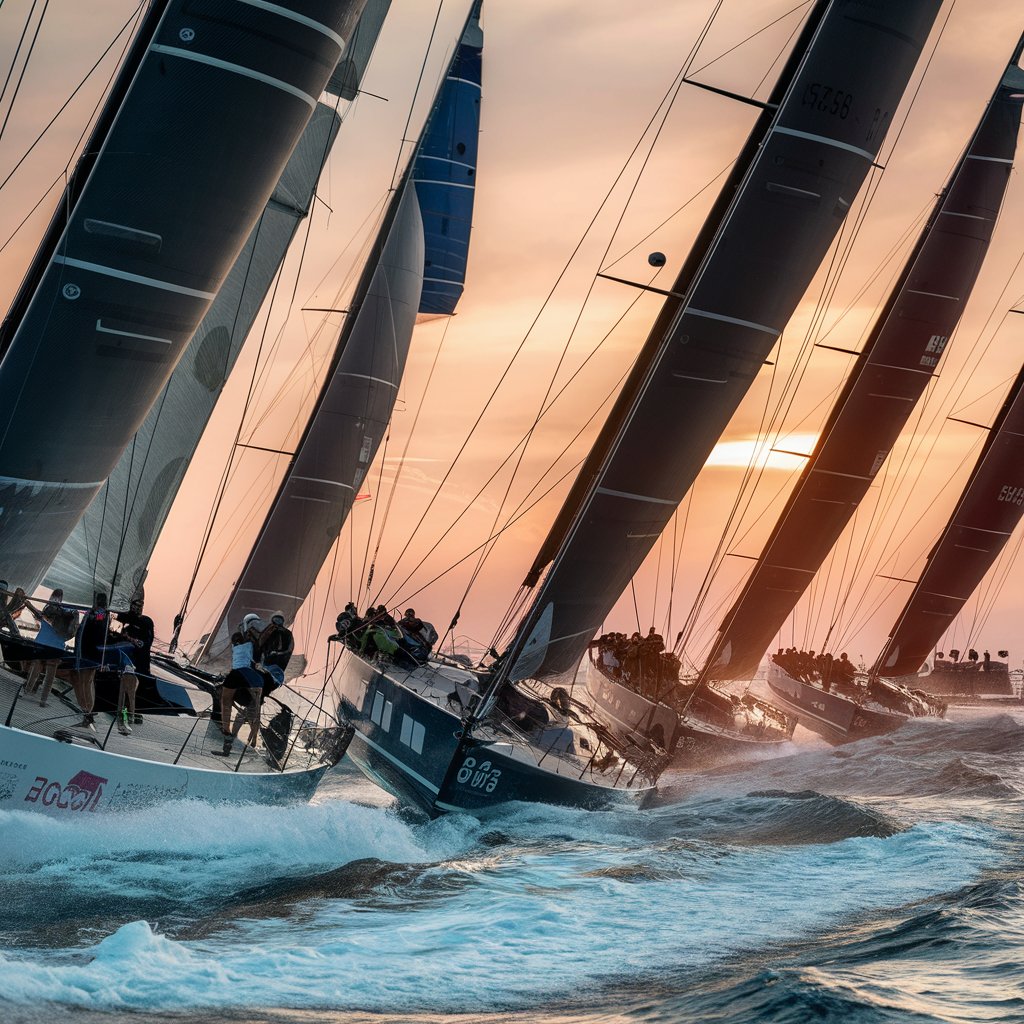Series: ”Did You Know”
Introduction
Yacht racing is a thrilling and competitive sport that combines skill, strategy, and the elements. Originating in the 17th century, this sport has evolved into a global phenomenon, captivating enthusiasts with its blend of tradition and modernity.
The importance of yacht racing as a competitive sport cannot be overstated. It offers a unique combination of mental and physical challenges, pushing sailors to their limits while fostering a strong sense of camaraderie and teamwork.
Did You Know: What is the Fascination with Yacht Racing?
Yacht racing has its roots in the 17th century, when sailboats started competing against each other for speed and performance. These races were initially informal and focused on friendly rivalry among sailors.
The Royal Yacht Squadron’s Influence
In 1815, the establishment of the Royal Yacht Squadron brought about a significant change in yacht racing. This esteemed club played a crucial role in formalizing the sport by introducing structured rules and organizing events like Cowes Week, which is still one of the oldest and most renowned regattas today.
The America’s Cup is the Oldest International Sporting Trophy?
First contested in 1851, the America’s Cup is indeed the oldest international sporting trophy, predating the modern Olympic Games by nearly half a century. Since it started, this prestigious event has fascinated sailors and spectators alike, setting a standard for excellence and innovation in the sport. Take the schooner America, for instance. Its historic victory over the finest British yachts around the Isle of Wight wasn’t just a win; it was a declaration of prowess that positioned the United States as a burgeoning force in the realm of yachting.
This defining moment set the America’s Cup on a course to become a technological and tactical battleground, where innovation and strategic thinking are as crucial as the mariners’ sailing capabilities.
Every one of the 36 times this trophy has been contested, it’s shone a spotlight on the evolving designs, materials, and techniques of the yachts themselves. In this context, the America’s Cup isn’t merely a race; it evolves into an exhibition where cutting-edge technologies parade before the world, each seeking to claim the cup and, with it, a place in Maritime History.

Speaking of Did you know, well did you know that AI Apply is revolutionizing the job application process with AI-powered tools? Whether you’re a job seeker or recruiter, AI Apply streamlines the entire hiring journey, from resume optimization to matching candidates with the right opportunities. Experience smarter job applications and faster, more accurate results. Click HERE to Discover how AI Apply can give you the competitive edge!
Explore Brief Video below to learn How AI Apply Simplifies Your Job Search
The Legendary Race
- The schooner America, representing the New York Yacht Club, competed against 15 British vessels.
- America emerged victorious, crossing the finish line ahead of its competitors and securing a historic win.
- This accomplishment not only brought international recognition but also established the America’s Cup as a highly sought-after prize.
Believe it or not, the impact of that first race still resonates in yacht racing today. Every subsequent America’s Cup event builds on this rich heritage.
However, the world of yacht racing is vast and varied, with numerous other major races and regattas bringing their own unique stories and traditions to the sport.
From Local Regattas to Global Showdowns: The Evolution of Yacht Racing Events

Yacht racing has come a long way from its humble beginnings as local races held close to the shore. While those inshore regattas still hold their charm, it’s the offshore races that have truly taken yacht racing to new heights. These global events push sailors to their limits, testing their skills, endurance, and ability to adapt in some of the most challenging conditions imaginable.
Offshore Races: Pushing Boundaries and Testing Limits
Offshore races are like nothing else. It’s a true adventure where you’re constantly pushing yourself and your team to overcome challenges and reach new horizons. It represents a thrilling and demanding aspect of competitive yacht racing. These races typically cover long distances, challenging sailors with Unpredictable Weather, complex Navigation, and Extended Periods at Sea. Three prominent examples include the Transpacific Yacht Race (Transpac), the Newport to Bermuda Race and the Rolex Sydney Hobart Yacht Race.
Transpacific Yacht Race (Transpac)
The Transpacific Yacht Race, commonly known as Transpac, is one of the oldest and most prestigious offshore yacht races. First held in 1906, this biennial event spans approximately 2,225 nautical miles from Los Angeles, California, to Honolulu, Hawaii. The race tests both the endurance and skill of sailors as they navigate the vast Pacific Ocean.

Challenges of Transpac:
- Long Distances: Sailors must be prepared for days or even weeks at sea.
- Weather Patterns: Navigating through Varying Weather conditions requires strategic planning.
- Crew Management: Maintaining crew morale and efficiency over long stretches is crucial.
Newport to Bermuda Race
Another iconic offshore race is the Newport to Bermuda Race. Initiated in 1906 by Thomas Fleming Day, this biennial event covers about 635 nautical miles from Newport, Rhode Island, to Bermuda. The race is renowned for its combination of coastal and open-ocean sailing challenges.
Challenges of Newport to Bermuda:
- Gulf Stream Navigation: Competitors must skillfully navigate the powerful Gulf Stream current.
- Varied Conditions: Sailors face a mix of coastal winds and open-ocean swells.
- Strategic Decisions: Tactical choices regarding routing can significantly impact performance.

The Rolex Sydney Hobart Yacht Race
The Rolex Sydney Hobart Yacht Race is one of the most iconic and challenging ocean races in the world, held annually since 1945. Organized by the Cruising Yacht Club of Australia (CYCA) and sponsored by Rolex, this race begins on Boxing Day (December 26) in Sydney Harbor and concludes in Hobart, Tasmania. The race covers a distance of approximately 628 nautical miles, navigating through the treacherous waters of the Bass Strait and the Tasman Sea.
Route Du Rhum: A Battle with the Elements
The Route Du Rhum is another iconic oceanic race that spans 3,543 nautical miles from Saint-Malo, France to Pointe-à-Pitre, Guadeloupe. Held every four years since 1978, this race attracts a diverse fleet of yachts ranging from Monohulls to Multihulls. It stands out for its dramatic starts lined with thousands of spectators and its challenging Atlantic crossing that often includes Severe Storms and Treacherous Sea Conditions. The Route Du Rhum is celebrated for its intense competition and the raw spectacle of human versus nature.
Unique Aspects and Difficulties
- Isolation: Unlike offshore races where crew members can rely on each other, many oceanic races are single-handed or have very small crews.
- Weather: Participants must be prepared for extreme weather conditions including storms, high winds, and large waves.
- Navigation: Accurate navigation is critical due to the long distances covered without sighting land.
- Physical and Mental Stamina: Competitors need to maintain peak performance levels over weeks or even months.
Atlantic Rally for Cruisers
Another Race that has grown in popularity over the years is the Atlantic Rally for Cruisers
The ARC (Atlantic Rally for Cruisers) is an annual transatlantic sailing event organized by World Cruising Club. It is a popular event attracting hundreds of yachts and sailors from around the world, aiming to safely and enjoyably cross the Atlantic Ocean.
Routes
The ARC features two primary routes:
- ARC Route (Standard Route)
- Start: Las Palmas de Gran Canaria, Canary Islands
- Finish: Rodney Bay, Saint Lucia
- Distance: Approximately 2,700 nautical miles
- ARC+ Road
- Stage 1:
- Start: Las Palmas de Gran Canaria, Canary Islands
- Stopover: Mindelo, Cape Verde
- Distance: Approximately 850 nautical miles
- Stage 2:
- Start: Mindelo, Cape Verde
- Finish: Rodney Bay, Saint Lucia
- Distance: Approximately 2,150 nautical miles
- Stage 1:
Distances and Schedule
- ARC Route:
- Distance: ~2,700 nautical miles
- Schedule: Typically starts in late November and takes about 18-21 days, depending on weather conditions and yacht speed.
- ARC+ Road:
- Distance: Total of ~3,000 nautical miles (split into two stages)
- Schedule: Also starts in late November, with a stopover in Mindelo, Cape Verde. The duration of the stopover is usually around 3-5 days before continuing to Saint Lucia. The total journey also takes around 18-21 days of sailing time, excluding the stopover.
As of 2024, the ARC has been running for 39 years. There is also one more dynamic to yacht racing organized by the World Cruising Club that allows sailors to circumnavigate the globe in a structured and supportive manner. Known as World ARC, this rally takes participants on a comprehensive journey around the world, covering approximately 26,000 nautical miles over the course of 15 months.
The World ARC includes a series of legs that navigate through some of the most scenic and culturally rich regions, such as the Caribbean, Pacific Islands, Australia, Southeast Asia, and South Africa. With organized stopovers, safety checks, and social activities, the World ARC fosters a sense of camaraderie and adventure among its participants, making the epic journey of circumnavigation accessible and enjoyable for sailors of various experience levels.
Of course, we can go on to mention many other popular yacht races that have stamped their names through the years, such as the grueling Vendée Globe, among many others. These events, much like the examples already highlighted in this article, epitomize the spirit of sailing, combining elements of competition, adventure, and international camaraderie.
Each race, with its unique challenges and historical significance, contributes to the rich tapestry of global sailing culture. Collectively, these events inspire countless sailors to push their limits and embrace the ocean’s vast, unpredictable beauty.
Why Does Yacht Racing Captivate So Many?
Part of the fascination with yacht racing, I believe, comes from witnessing human mastery over the whims of nature. It’s about the people who read the waves, gauge the wind, and steer these vessels through intense competition.
They highlight the timeless allure of maritime exploration, demonstrating that whether one is competing for glory or pursuing the thrill of the open sea, the world of yacht racing continues to thrive and evolve, uniting people across continents in a shared passion for the sport.
Champions of the Sea: A Team of Elite Sailors Raise the Trophy in a Thrilling Yacht Race Victory

Environmental stewardship also becomes paramount as the sport progresses. Yacht racing now faces the essential task of honoring its legacy while navigating the crucial waters of Sustainability. In our changing world, the industry’s leaders and enthusiasts alike are increasingly aware of the sport’s environmental footprint and are striving to ensure that the beauty of yacht racing can be enjoyed by generations to come.
Beyond the Cup: Celebrating the Spectrum of Yacht Racing
These races are not just tests of physical might but are also feats of technological innovation, showing us how far we’ve come since the days when the stars were the only guide.
Yacht racing encapsulates the quintessence of nautical tradition, sporting competition, and the pursuit of human excellence. It celebrates the harmonious yet challenging relationship we have with nature. As competitors aim to break records and redefine the limits of sailing, the sport continues to inspire and captivate audiences worldwide. And to those who sail, it promises a perennial adventure, keeping the timeless allure of the open seas alive for future generations.
So, we urge you: Engage with this dynamic sport, contribute to its evolution, and witness firsthand how it continues to captivate and inspire across generations.
This concludes our article in the “Did You Know” series. We hope these insights have been both intriguing and informative. Don’t miss the next article in the series, “How Yachting Contributes to the Global Economy.”
**Our Website contains affiliate links. This means if you click and make a purchase, we may receive a small commission. Don’t worry, there is no extra cost to you. It’s a simple way you can support our mission to bring you quality content**.

NordPass is a password manager designed to securely store and manage your passwords. It emphasizes security and convenience, offering features like password generation, secure storage, and autofill for online forms. The service aims to simplify password management while ensuring your sensitive information is protected against cyber threats. Click Image Below to learn more



The article “Did You Know the Fascination with Yacht Racing?” from Blanchard’s Yacht Services captures the multifaceted allure of yacht racing, emphasizing its excitement, skill, and cultural significance. From personal enjoyment to broader societal impacts, yacht racing offers numerous benefits and opportunities. Promoting inclusivity, sustainability, and community engagement within the sport can further enhance its appeal and positive influence. As a sport that combines adventure, strategy, and a deep connection to nature, yacht racing continues to captivate and inspire enthusiasts around the world.
Hello Richard
Many thanks, I am happy that you enjoyed the article and thought it was insightful.
Hello,
What a fascinating site you have. Here are some things I thought about when it comes to Yacht Racing:
Yacht racing, a captivating and challenging sport, has enthralled enthusiasts for centuries. Here are several reasons why it continues to charm people worldwide:
1. **Historical Legacy**: Yacht racing boasts a rich history that dates back to the 17th century when organized competitions began in Europe. Prestigious events like the America’s Cup have further cemented its place in maritime traditions.
2. **Technological Innovation**: The sport is at the cutting edge of marine engineering and design. Advanced materials, aerodynamic designs, and complex sail technologies make yacht racing not only about skill but also about leveraging state-of-the-art innovation.
3. **Skill and Strategy**: Competitive yacht racing requires an intricate blend of physical endurance, precision navigation, meteorological acumen, and tactical prowess. Sailors must constantly adapt to changing wind conditions and currents while outmaneuvering their rivals.
4. **Adrenaline Rush**: There’s an undeniable sense of excitement associated with high-speed sailing on open water. The thrill of harnessing natural forces to propel a vessel creates an exhilarating experience both for participants and spectators.
Keep up the great work here.
Thank you,
Mike Powers
Hey Mike
Awesome, many thanks.
I am delighted that you enjoyed the article.
I knew very little about yacht racing before reading this, but I gained so much insight into the sport! Learning about the history, the challenges of different races, and the blend of tradition and modernity was fascinating. The details about events like the America’s Cup and the Transpacific Yacht Race really brought the sport to life. Do you think the technological innovations in yacht racing could influence other sports? Thanks for the deep dive!
Hello Rae
It’s great to hear that you found the information on yacht racing so enriching! Yacht racing indeed offers a unique blend of tradition and innovation, which could potentially influence other sports. Technological innovations in yacht racing, such as advanced materials for sails, hull designs, and navigation systems, often push the boundaries of what’s possible in terms of performance and safety.
These innovations could inspire similar advancements in other sports. I can think of one example, namely the Formula 1 racing, where technology plays a crucial role in performance enhancement and safety improvements.
Thanks again for your feedback